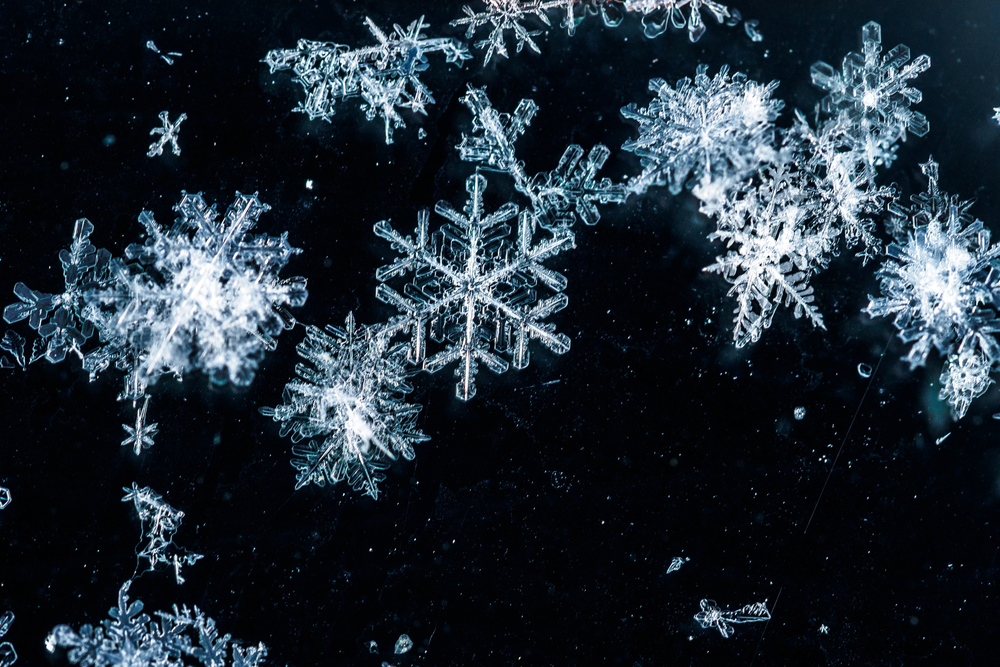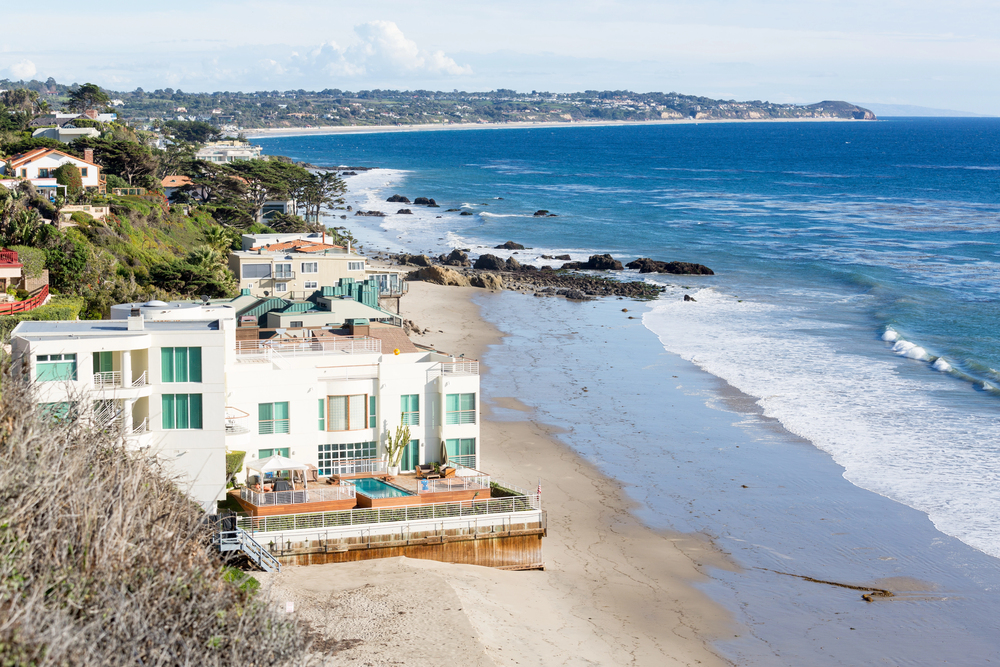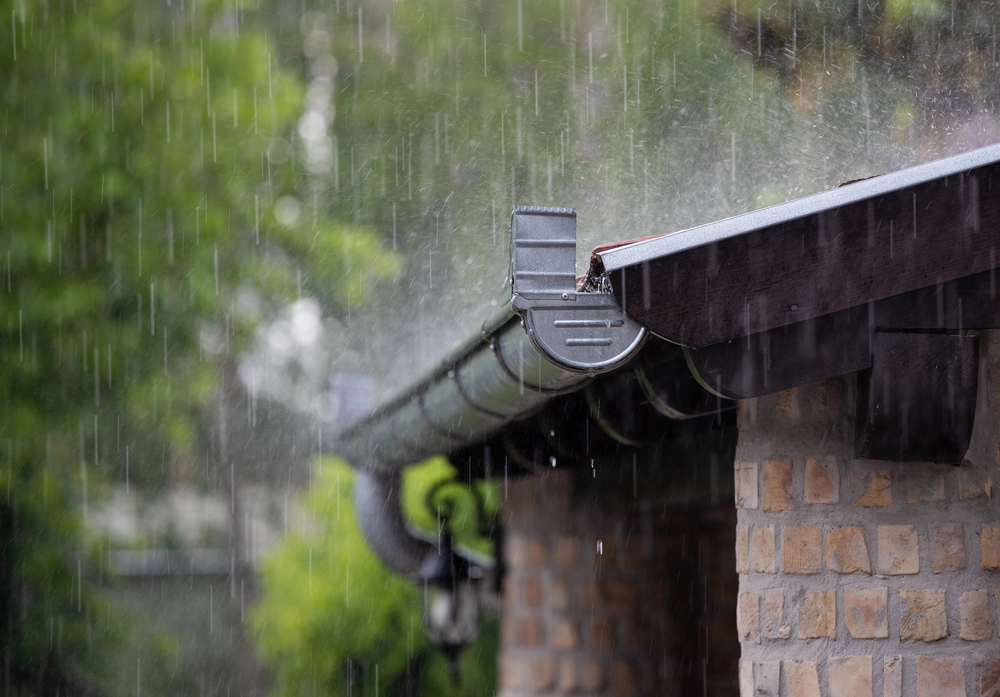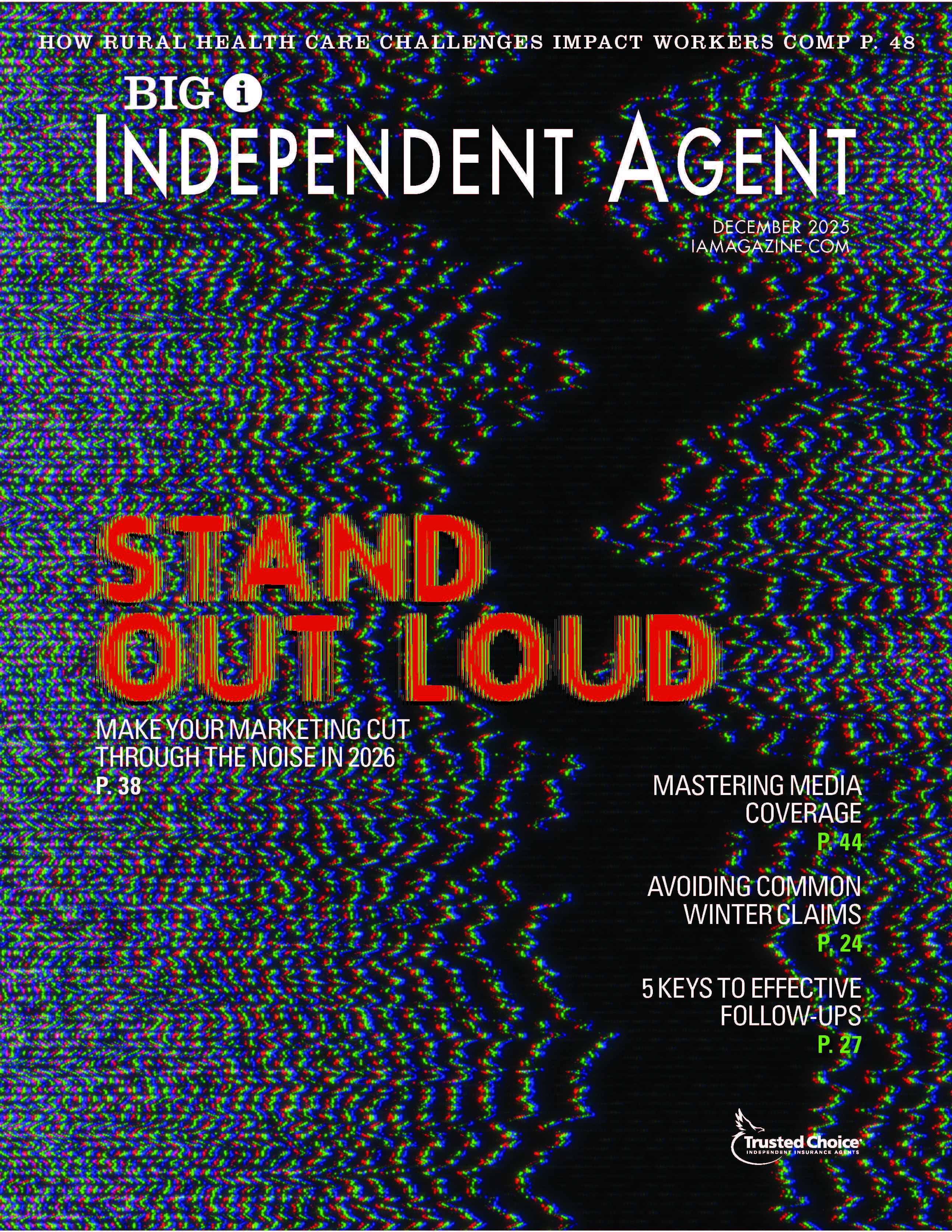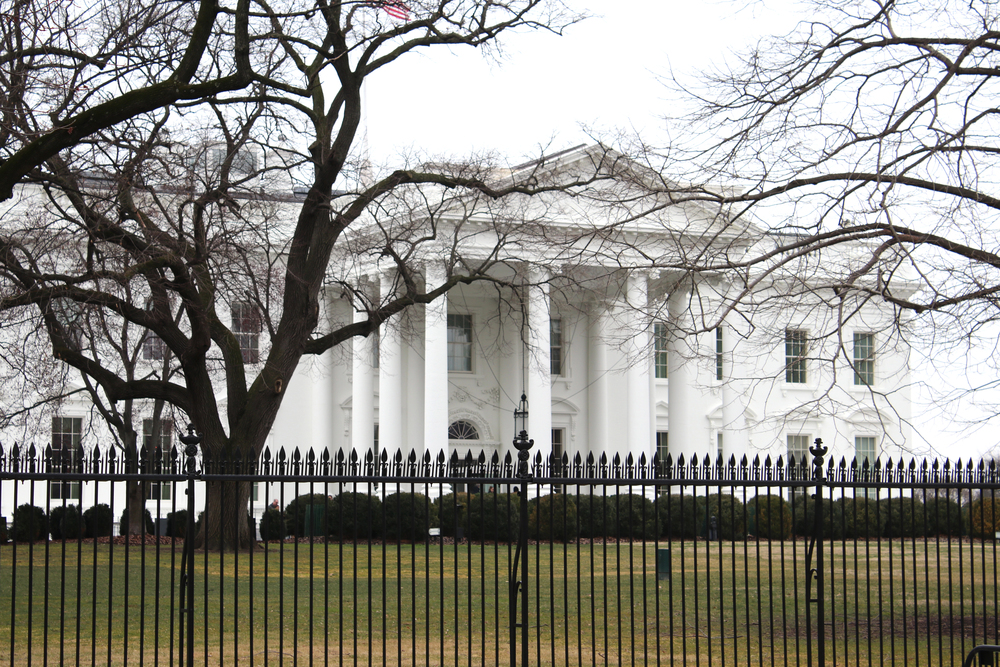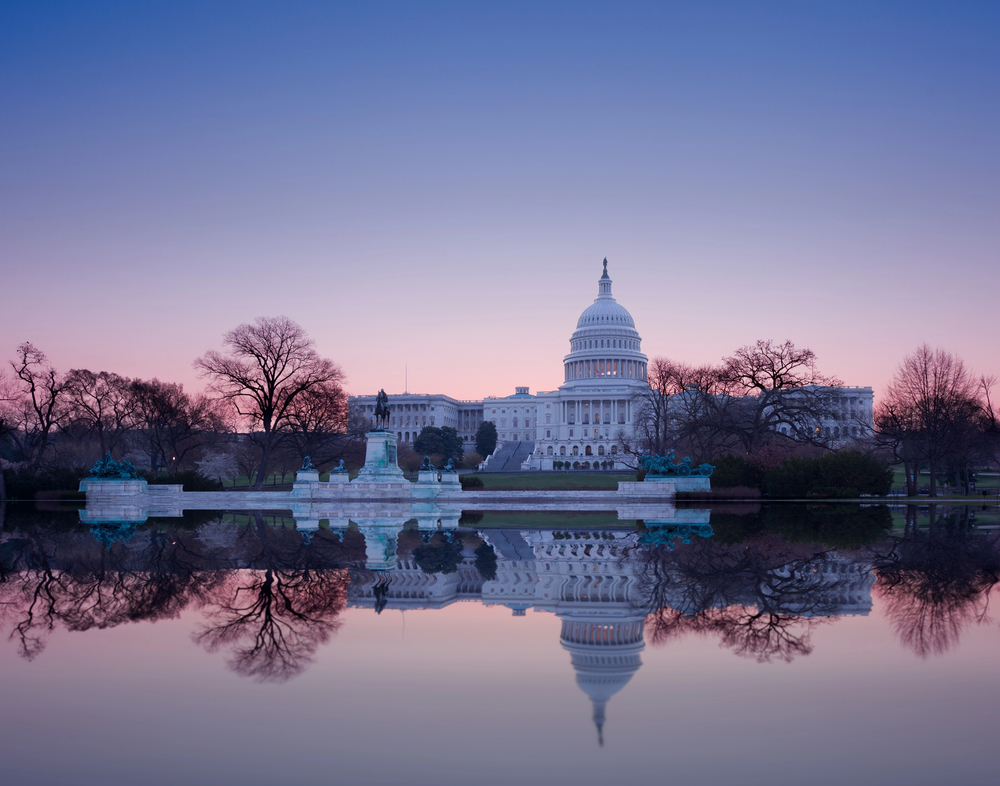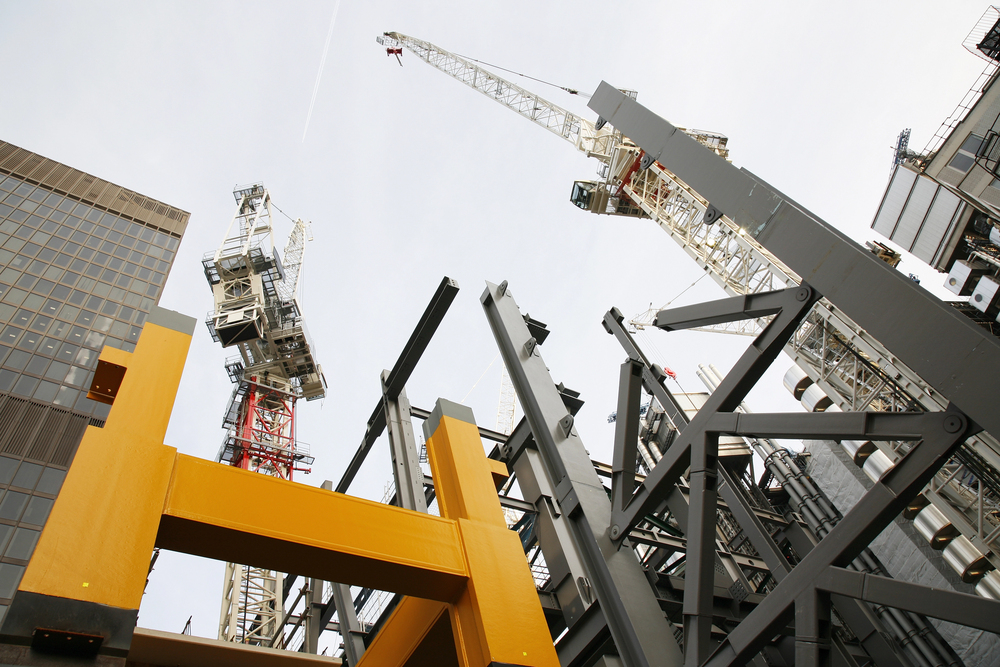2.6 Million Western U.S. Homes Are Exposed to Wildfire Risk, Says Cotality Report
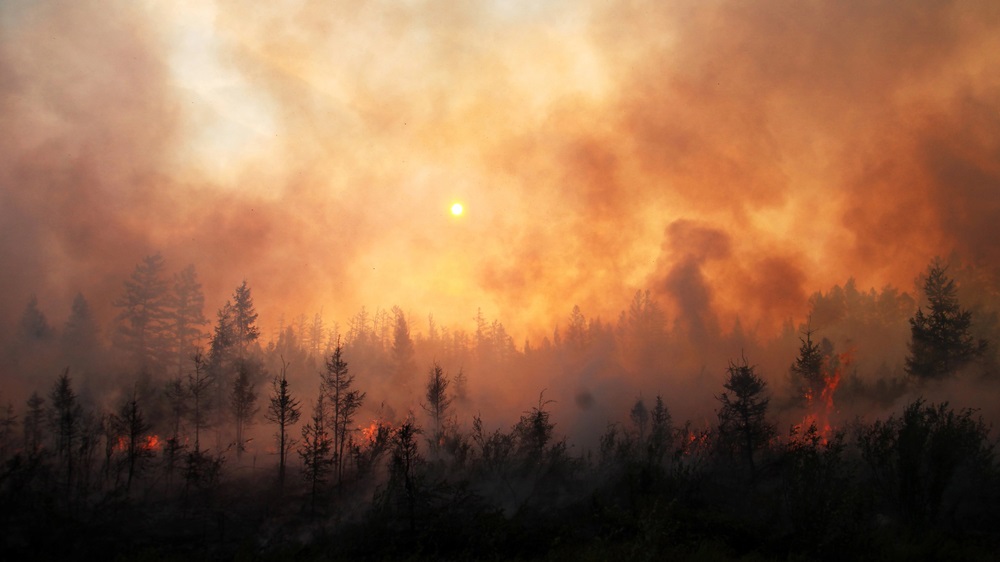
More than 2.6 million homes across 14 states in the Western U.S. are at moderate to very high risk of wildfire damage during the 2025 wildfire season, according to the 2025 “Wildfire Risk Report” from Cotality. Of those, 1.2 million have a very high wildfire risk.
Together, the homes exposed to wildfire risk represent a combined reconstruction cost value of $1.3 trillion.
Wildfire risk is shifting due to an increasing number of homes being built in the wildland-urban interface (WUI), where proximity to undeveloped land increases exposure. Additionally, the report notes that fire suppression has led to dense fuel build-up, and hotter, drier seasons allow more opportunity for vegetation to ignite.
Nearly half—1.3 million—of the at-risk homes are in California, with Colorado, Texas, Oregon and Arizona following. While 8 of the top 15 metro areas with the most at-risk homes are in California, wildfire threat is growing in high-population areas like Austin, Denver and Colorado Springs.
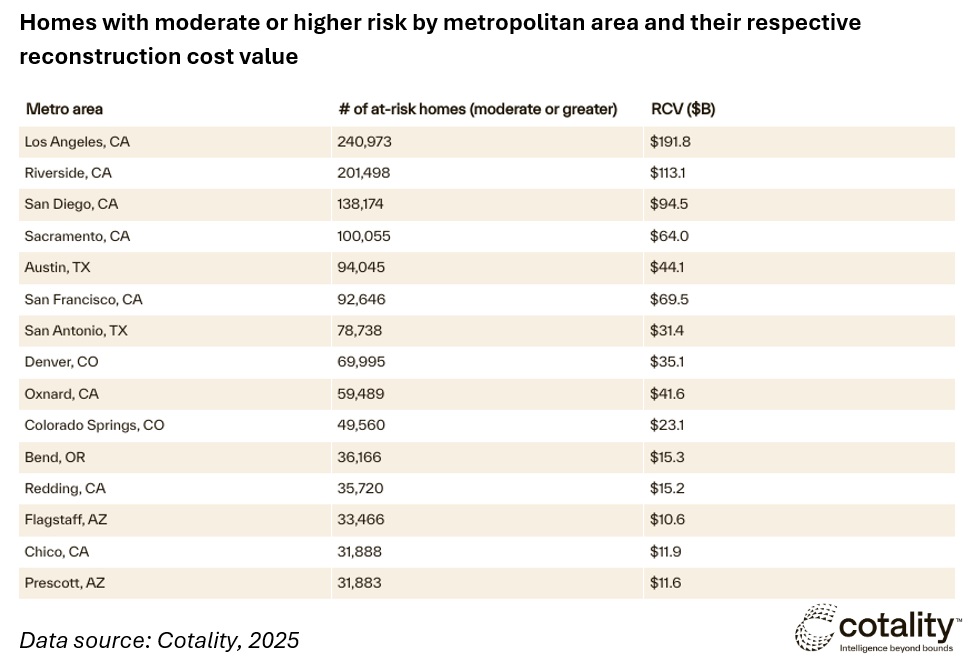
A rising trend in wildfires is wildfire-induced conflagration, which was seen in at least 10 major wildfire events since 2020, including the Palisades and Eaton fires in Los Angeles in January, the Lahaina fire in Hawaii in 2023, and the Marshall fire in Colorado in 2021.
Conflagration “occurs when the primary fuel source shifts from vegetation to the built environment,” Cotality’s report explained. “It fundamentally alters the fire’s behavior, impacting how it spreads, where it travels, and the scale of its potential destruction.”
Cotality’s retrospective analysis of the Palisades and Eaton fires found that properties with low or moderate wildfire hazard may still face high or very high conflagration risk. In the Eaton Fire, 75% of properties within the fire perimeter were rated low-to-moderate hazard, yet had a high conflagration hazard. As many as 84% of affected or destroyed structures fell into that category. In the Palisades Fire, 37% of properties were low-to-moderate hazard but had high conflagration risk, and 48% of destroyed properties fell into that category.
More On Disaster Preparedness
The evolving nature of wildfire risk highlights the need to improve wildfire risk management. “Wildfires are complex, fast-moving, dangerous—and a growing threat to homes and communities,” said Tom Larsen, Cotality’s assistant vice president of product marketing for insurance solutions. “Understanding the level of risk will help equip homeowners and insurers to take preventative action that can save properties and lives.”
“There are many contributing factors to the increasing threat of wildfires, including where and how we build,” Larsen continued. “Building with wildfires in mind and introducing mitigation measures for where we have already built is one of the critical conversations we need to be having right now.”
AnneMarie McPherson Spears is IA news editor.
